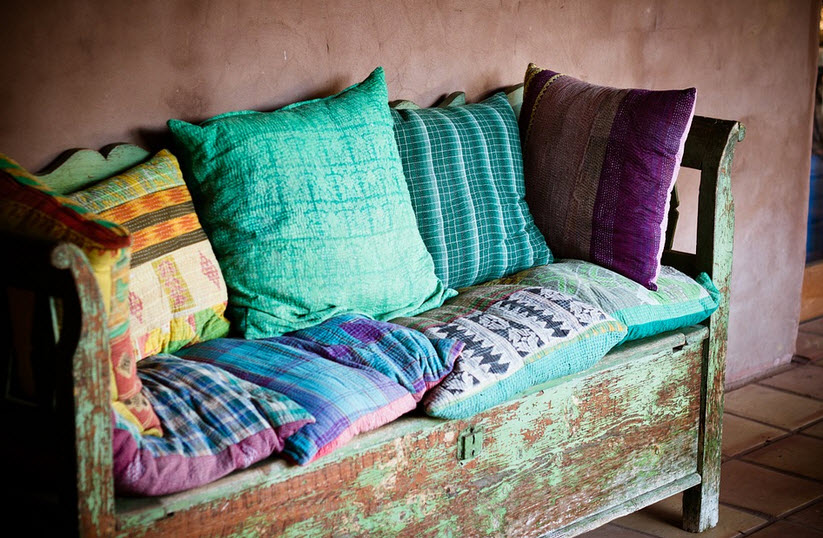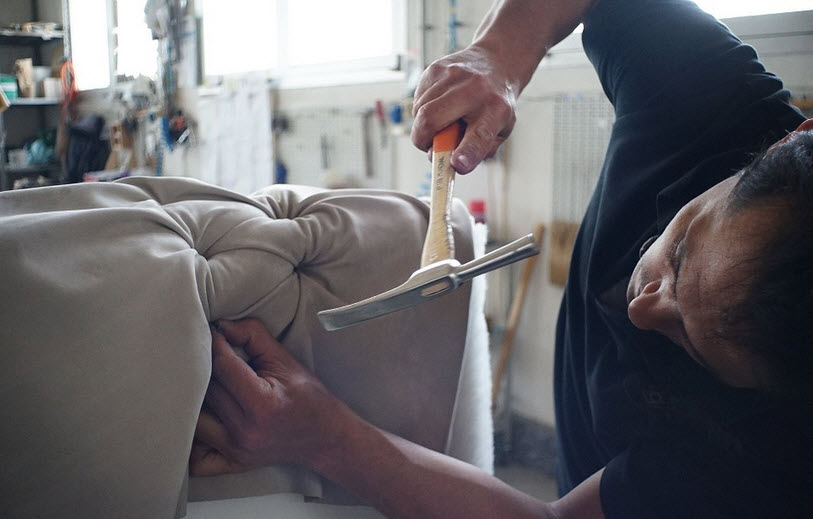Upcycling
Upcycling is a great way of preventing existing things – such as furniture, clothes or packaging – from ending up in landfills. Instead of throwing unwanted things away, or leaving them for recycling, we turn them into new and sought after products.

The terms upcycling and downcycling began to get traction in the mid-1990s, after being included in a 1994 printed article in SalvoNEWS by Thornton Kay quoting Reiner Pilz.
“We talked about the impending EU Demolition Waste Streams directive. “Recycling,” he said, “I call it downcycling. They smash bricks, they smash everything. What we need is upcycling, where old products are given more value, not less.” He despairs of the German situation and recalls the supply of a large quantity of reclaimed woodblock from an English supplier for a contract in Nuremberg, while just down the road a load of the similar block was scrapped. In the road outside his premises was the result of the Germans’ demolition “waste” recycling. It was a pinky looking aggregate with pieces of a handmade brick, old tiles, and discernible parts of useful old items mixed with crushed concrete. Is this the future for Europe?”
In their 2002 book Cradle to Cradle: Remaking the Way We Make Things, the writers William McDonough and Michael Braungart states that the goal of upcycling is “to prevent wasting potentially useful materials by making use of existing ones. This reduces the consumption of new raw materials when creating new products. Reducing the use of new raw materials can result in a reduction of energy usage, air pollution, water pollution and even greenhouse gas emissions”.
Seven tips for upcycling furniture!
Use your imagination
Be imaginative when it comes to upcycling. A book-shelf doesn´t have to be upcycled into a different looking book-shelf. Maybe this little bookshelf should become a doll´s house? Or maybe it should be provided with a door and used as a cupboard? Maybe it makes more sens to flip it over and use it horizontally instead of upright?
There is much more you can do than simply repainting a dresser and giving it new knobs.
Don´t be afraid to have fun and be bold!
Be open to inspiration
When you see something you really like in a high street shop or online, take the inspiration to heart instead of buying the furniture. There is probably some used furniture that you can get your hands on and turn into something very similar – maybe even something better since you will be able to tweak it more to your exact preferences.
Prep prep prep
Proper preparation increases the chance of a successful outcome. It is tempting to just jump in there with the roller and the bright yellow paint, but take a breath and stand back.
- Look for signs of bed bugs, and treat if necessary
- Make a project plan for the upcycling
- Make sure you have the right tools and materials on hand
- Clean the furniture well
- If you are using paint, varnish, wax or similar, test it on a small and inconspicuous part of the item first and leave it to dry. Don´t continue with the rest of the furniture until you know that you like the end result.
Think “reuse” when it comes to things needed for the process
When you are upcycling something, such as a piece of furniture, try to be frugal and sustainable throughout the process. Yes, it´s good that you are upcycling an old sideboard – but it is even greater if you can do it using repurposed materials.
Example:
- Use old wallpaper to do decoupage.
- Exchange those old dresser knobs for some other pre-loved ones instead of buying brand new knobs.
- Save worn out socks and use them as cleaning cloths and to apply wax to furniture.

Take good care of your tools
When it comes to paint brushes and rollers, it is actually a good idea to go out and buy brand new ones, to ensure that you get high-quality ones that will last for long, make the work easier and not leave bristles or fibers in the paint. Take good care of your brushes and rollers to keep them in condition. Wash them well (but with a gentle touch) after each use and wrap them up in protective fabric.
